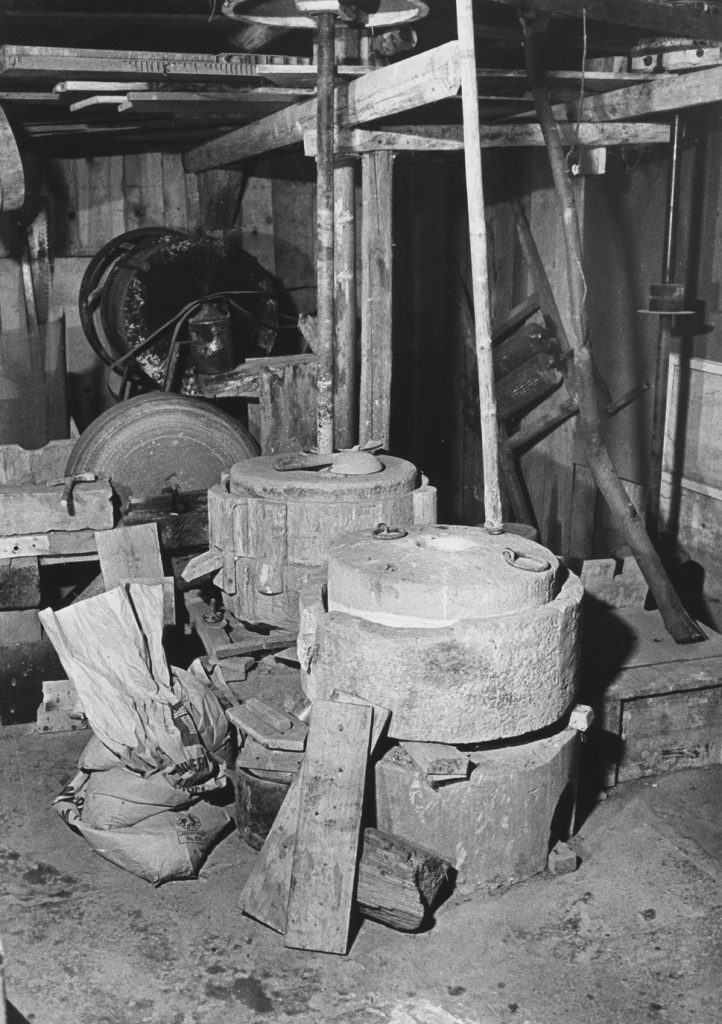
Giesler pottery, Dällikon ZH, glaze crushers, photo taken in 1973 (Foto ARV, archives of the Zurich Department of Heritage Preservation).
The process of making glaze for earthenware, faience and refined white earthenware was rather elaborate and involved crushing the different ingredients (lead, tin, metal oxides, clay, sand and salt) and mixing them together. The more care went into preparing the glaze, the better the finished product, particularly in the case of faience. Glazes were sometimes produced by specialist craftspeople who ran their own businesses.
Glaze crushers or glaze mills driven manually or by water power were located either in the potter’s workshop (mainly hand-operated) or in a separate building (mainly water-powered). Most crushers consisted of a heavy, stationary quern underneath and a smaller rubber on top. It was not until the late 19th century that the simple glaze crushers were gradually replaced by drum or ball mills driven by water power or by electric motors.
Translation Sandy Haemmerle
German: Glasurmühle
French: moulin à broyer
References:
Matter 2007
Annamaria Matter, Dällikon, Mühlestraße 12, Hafnerei Gisler, Kanton Zürich CH, in: Andreas Heege, Töpferöfen-Pottery kilns-Fours de potiers. Die Erforschung frühmittelalterlicher bis neuzeitlicher Töpferöfen (6.-20. Jh.) in Belgien, den Niederlanden, Deutschland, Österreich und der Schweiz (Basler Hefte zur Archäologie 4), 2007, 321-328, bes. Abb. 19.
Stadler 2002
Harald Stadler, Untersuchungen zur neuzeitlichen Keramikproduktion im Pustertal am Beispiel der Hafnerei Höfer-Troger-Steger in Abfaltersbach, Osttirol. Band 1: Die Familiengeschichte, die Baulichkeiten und das hafnereitechnische Inventar (Nearchos 11), Innsbruck 2002, bes. 91-122.

